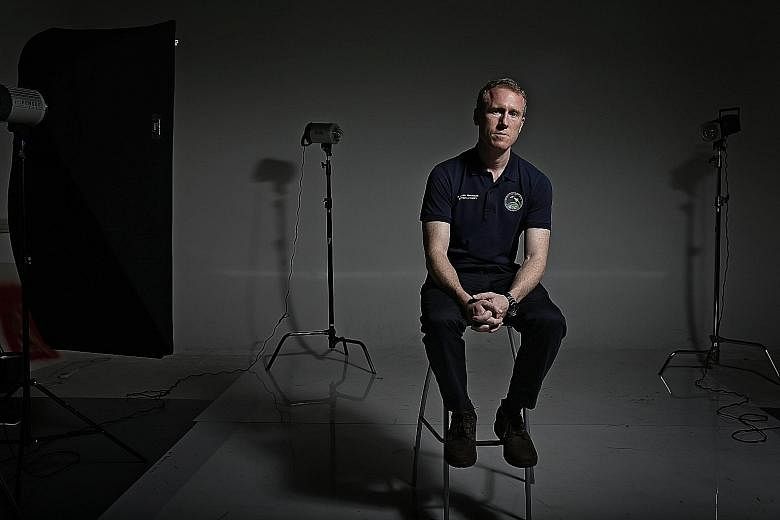Q What is Gilmour Space Technologies?
A We are an innovative engineering company focusing on developing a small satellite launch vehicle or, in other words, rockets. The company was started in 2013 by myself and my brother James to build spacecraft simulators for our sister company, Gilmour Space Corporation, which does space education.
Although we still have the capabilities to manufacture these simulators, the rocket business has since become our dominant business.
The rocket programme started in early 2015 with a series of rocket engine tests which we did in Australia, and in July last year, we assembled our first test flight rocket. We are in the middle of the design process right now and we test different components at a time to save money in the event of a crash. Rocket launch tests cost around US$10 million (S$14 million) to US$20 million for our competitors so we hope to be a game changer by doing it for half a million per orbital test launch.
We operate across Singapore and Australia. We currently have 17 engineers and five management staff.
Our eventual goal is to be able to launch small satellites below 500kg into space using our rockets.
Q What made you decide to enter the space industry?
A Apart from the fact that I have always found space interesting, I saw the space industry as one with huge opportunities because its costs seemed out of touch with reality - it shouldn't cost a hundred million dollars to launch a rocket.
I was inspired by a competition in 2004 to build a reusable spaceship. Space projects were thought to cost billions of dollars but these guys made a spaceship for US$20 million - it convinced me that if they could do it, this was an industry I could get into.
I financed the company quite a bit by myself at the beginning but this latest A$5 million (S$5.15 million) Series A venture capital funding round with investors such as Blackbird Ventures and 500 Startups will last us for another three years and get our technology to a stage where we can go for another round. While substantial amounts of money have to go into research and development, and test launches, having good technology will help keep costs low and the investors interested.
Q What is special about the technology used in your rocket engines?
A We use a rocket engine called a hybrid rocket engine. It works by pushing a liquid oxidiser through the centre of a piece of solid fuel to make it burn.
One way of picturing it is to imagine blowing on fire to make it stronger. Our system does the same thing just with a liquid oxidiser instead of breath.
While hybrids - which have been in development for 16 years - are not unique in themselves, they come with many structural and combustion problems. For instance, they do not usually burn very well - the engine blast sputters instead of providing a nice steady thrust. This is dangerous because if the rocket bounces all over the place, it could get ripped apart. We have managed to solve this problem by using 3D printing for some of the parts which go into the engine.
The solid fuel that we use is also 3D printed using our own formula, and it helps keep our engines efficient too.
Our technology allows us to keep costs down; we expect to spend around a quarter on development compared with our competitors. This is because they are mainly using technology which is expensive and complicated while we have managed to simplify rocket technology substantially.
Our analogy is everyone is building a Rolls-Royce to go into space - we can give you a van.
Q What are the company's plans for the future?
A The next two years will be about demonstrating more rocket technology - we have two rocket launches planned for the next 12 months.
The second one will go up about 100km into space and demonstrate about two-thirds of the technology we need to launch a satellite into orbit. That will be our focus for the next 18 to 24 months.
By next year, we also plan to launch suborbital rockets, which are rockets that go up into space and down again. These are mainly used as a sort of certification for companies to make sure certain equipment will hold up in space.
We hope to launch our first orbital rocket to place a satellite in space by 2020. In order to do that, we need to achieve a height of at least 200km and sufficient speed to keep it orbiting around Earth without succumbing to gravitational forces. We're on the path to getting there but we've got a lot of work ahead of us.
Q What is your biggest challenge?
A Our biggest challenge is in developing the technology. Whenever you're doing new R&D, there are always unforeseen events which happen and we need to learn to bounce back from them.
We have managed to shorten the time required for a retest after a failed test.
We do this through our principle of always having a spare part for anything which could possibly fail. It's a simple but effective principle.
Correction note: This story has been edited to correct the name of Adam Gilmour's brother, who is James Gilmour.

